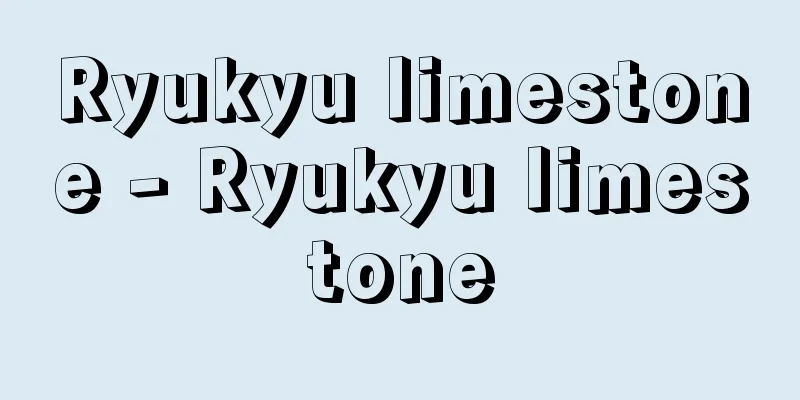Buddhist sculptor

|
This is an abbreviation of "zobutsu-shi" (a Buddhist statue sculptor), a craftsman who works on the production of Buddhist statues. In Japan, the term "busshi" was first used on the inscription on the halo of the Shaka Sanzon statue (Shaka Sanzonzo) in the Golden Hall of Horyu-ji Temple, produced in 623 (the 31st year of the reign of Empress Suiko), which read "Shibakuratsukuri no Obito Toribusshi." Later, during the Nara period, these craftsmen belonged to government offices and were dispatched to work at the Buddha statue making studios of government-run temples. When the number of Buddha statues made by government officials decreased during the Heian period, each major temple had its own Buddha statue making studio and employed craftsmen. Also, craftsmen who painted Buddhist paintings at that time were called ebutsu-shi (e-buddhist sculptors), while craftsmen who carved wooden Buddha statues were called kibushi (wooden Buddha sculptors). In the mid-Heian period, Buddhist sculptors became a profession, and when the Butssho (a Buddhist sculptor's workshop) was established, the head of the Butssho was called Daibusshi (Great Buddha sculptor), and those who worked under him came to be called Kobusshi (Small Buddha sculptor). The term Daibusshi was already seen in the Nara period as a title for Kuninakanomuraji Kimimaro, who built Todaiji Temple, but this has a different meaning from that of the Heian period, and is considered to be a complimentary title for the master carpenter. In contrast, in the Heian period, the craftsmen who actually did the work were called "Buddhist sculptors," and the original term Daibusshi was first used in the entry for December 23, 1023 (Jian 3) in the Shoyuuki, where it reads "Daibusshi Hokkyo Jocho," which is understood to mean the sculptor with the highest responsibility for the construction of the Buddha statues at Hojoji Temple. On the other hand, the first time a small sculptor appears is in the entry for 1020 in the "Sakei-ki" as a "young sculptor," and the chief sculptor was Jocho's father, Kosho. Prior to this, the term "disciple" was used for those who should have been called small sculptors, and Kosho himself was simply called a "buddhist sculptor." From these examples, it seems that the names and organizations of great sculptors and small sculptors were not clearly defined until Jocho's time. In one example, Jocho mobilized about 120 sculptors to create 27 life-size Buddha statues, with Jocho as the great sculptor in a special category, and under him were 20 great sculptors and 105 small sculptors (i.e., one great sculptor and five small sculptors). From this, it can be inferred that great sculptor does not simply mean the chief sculptor, but is a title given to sculptors with certain qualifications, such as senior craftsmen, veterans, and those with command authority. During the Nara period, Buddhist sculptors were laypeople, whether they were government officials or private citizens, but in the Heian period, all Buddhist sculptors became monks. This is thought to be due to the tradition of belonging to temples and the fact that they were creating sacred Buddha statues, but from the mid-Heian period, when Jocho was active, they were given the high rank of Sogo, even among monks. However, this was only a formality, and in reality they lived as laypeople and their character as craftsmen became stronger. Furthermore, in the Kamakura period, the organization of Buddhist sculptors was further improved, with the rank of So Daibutsu sculptor above Daibutsu sculptor and Gon Daibutsu sculptor below him, but their character as monks gradually faded away, and in the Muromachi period, some of the Miya-daiku, or artisans who built temples and shrines, became Buddhist sculptors, and lay Buddhist sculptors without monk status, which had been extinct for hundreds of years since the Heian period, appeared, and by the Edo period, such lay Buddhist sculptors became the majority. [Akio Sato] ©Shogakukan "> Buddhist sculptor/genealogy Buddhist sculptor. "Shokunin-zukushi Ekotoba" second scroll (part) The original drawing is by Kuwagata Keisai (Kitao Masami) and the inscription is by Kyokaen (Shuzanjin) and is owned by the National Diet Library . Buddhist sculptor Source: Shogakukan Encyclopedia Nipponica About Encyclopedia Nipponica Information | Legend |
|
仏像制作に従事する工人のことで、造仏師の略称。日本で仏師の呼称の初出は、623年(推古天皇31)制作の法隆寺金堂釈迦三尊像(しゃかさんぞんぞう)の光背銘で、「司馬鞍作首(しばくらつくりのおびと)止利仏師(とりぶっし)」とある。その後奈良時代には、こうした工人たちは官衙(かんが)に属し、官営寺院の造仏所に派遣される形で仕事をした。平安時代に入って官の造寺造仏が減少すると、各有力寺院が造仏所をもち、工人を抱えることになった。またこのころ仏画を描く工匠が絵仏師とよばれたのに対し、木に彫刻する工人は木仏師(きぶっし)と称した。平安中期には仏師も職業化し、仏師の工房である仏所が定着すると、仏所の長を大仏師(だいぶっし)といい、その下で手足となって働く者を小仏師とよぶようになった。大仏師という語はすでに奈良時代に、東大寺の造立にあたった国中連公麻呂(くになかのむらじきみまろ)の肩書としてみられるが、これは平安時代のそれとは意を異にし、工人の棟梁(とうりょう)に対する美称と考えられる。これに対して平安時代には、実際の仕事にあたる工人は「仏工」の名でよばれ、本来の大仏師の語は『小右記(しょうゆうき)』治安(じあん)3年(1023)12月23日の条に「大仏師法橋(ほっきょう)定朝(じょうちょう)」とあるのが初例で、これは法成寺(ほうじょうじ)造仏の最高責任仏師の意と解される。 一方、小仏師は『左経記(さけいき)』寛仁(かんにん)4年(1020)の条に「少仏師」としてみえるのが最初で、主宰仏師は定朝の父康尚(こうしょう)である。これ以前には小仏師とよぶべき者にも「弟子」の語があてられ、康尚自身も単に「仏師」とのみよばれている。こうした例からみても、大仏師、小仏師の名称、組織などがはっきり定まったのは定朝の代からと思われる。定朝が等身仏像27体の造営に仏師120人ほどを動員した例では、定朝が別格の大仏師で、その下に大仏師20人、小仏師105人(つまり大仏師1人に小仏師5人)が従っている。これから推察すると、大仏師とは単に主宰仏師の意のみでなく、長上工、ベテラン、指揮権をもつなど、一定の資格のある仏師に与えられた肩書と思われる。 奈良時代の仏工は官吏、私人たるを問わず俗人であったが、平安時代になると仏師はすべて僧侶(そうりょ)となった。これは寺に所属したという伝統と、神聖な仏体の制作という理由によるものと思われるが、定朝の活躍した平安中期以後は、僧のうちでも高い位の僧綱(そうごう)位を授けられている。しかしそれは形式上のことで、実際には俗人としての生活を送り、職人的性格を強めていったとみられる。さらに鎌倉時代になると、仏師の機構はいっそう整備され、大仏師の上に惣(そう)大仏師、下に権(ごん)大仏師などもつくられたが、僧としての性格はますます薄れてゆき、室町時代には宮大工、つまり寺院や神社を建てる工匠のなかから仏師となる者も出てくるようになり、平安時代以来、数百年絶えていた僧籍のない俗人仏師が出現し、江戸時代に入ると、そうした俗人仏師がほとんどとなる。 [佐藤昭夫] ©Shogakukan"> 仏師/略系図 仏師。『職人尽絵詞』 第2軸(部分) 原図は、鍬形蕙斎(北尾政美)画、杏花園(蜀山人)詞書国立国会図書館所蔵"> 仏師 出典 小学館 日本大百科全書(ニッポニカ)日本大百科全書(ニッポニカ)について 情報 | 凡例 |
>>: Product Science - Bussan Gaku
Recommend
Keerthana - Keerthana
...Among these, there exists a singing style that...
Hakuto Beach - Hakuto Beach
A coast facing the Sea of Japan in eastern Tott...
Asanga - Asanga
Please see the "No clothes" page. Sourc...
Liberation - Kaihou
[1] [noun] ① To free oneself from the constraints ...
Nezumikomon Haruno no Shingata - Nezumikomon Haruno Shingata
A Kabuki kyogen play commonly known as Nezumi Kozo...
APC (military) - APC
…After World War II, the effectiveness of tanks a...
card board
...Includes index cards, bond paper (a hard, firm...
Kashmir Shiva - Kashmir Shiva
...The most famous theological and academic achie...
Bachet, CG (English)
...However, it was not until the 15th and 16th ce...
EOR - EOR
Please see the "Exclusive OR" page. Sou...
Columba versicolor (English spelling)
… [Kiyomitsu Sasaki]. … *Some of the terminology ...
Roman glass
A general term for glassware made within the Roman...
Edwinesburg
…During the Roman Empire, Roman troops were stati...
Shishamo (smelt) - Shishamo (English spelling)
A fish of the family Osmeridae (illustration) of t...
Igor'
?-945 Grand Prince of Kiev. Reigned 912-945. De fa...









